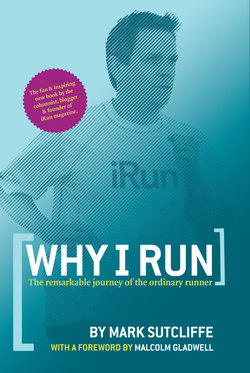Читать книгу Why I Run: The Remarkable Journey of the Ordinary Runner - Mark MDiv Sutcliffe - Страница 10
На сайте Литреса книга снята с продажи.
Blame Pheidippides
ОглавлениеiRun to carry the message Derek Carter, Alberta
Is it a guy named Pheidippides we should blame for this?
Or is it some ancient Greek writer who embellished a nugget of history into a piece of melodramatic fiction?
Or should we fault poet Robert Browning and two of his followers: a baron and the father of modern semantics? While we’re at it, should we curse the British Royal Family for those torturous final few metres?
Marathon runners owe their agony and glory to a compelling but utterly fictional story about an Athenian herald.
The myth goes that in 490 B.C., Pheidippides ran from the battlefield of Marathon to Athens, a distance of about forty-two kilometres, to announce a Greek triumph over Persia. After shouting, “We were victorious!” he died on the spot. Apparently he didn’t hydrate enough during his run.
The truth is, Pheidippides was a better runner than that. According to Herodotus, he ran from Athens to Sparta, a distance of about 250 kilometres, in two days.
Along the way, he encountered a god named Pan; their conversation led to Pan helping the Athenians win the Battle of Marathon. This may explain the later confusion of the story of Pheidippides with the battlefield of Marathon. It also may be the first reported case of hallucinations experienced by a tired long-distance runner.
Over the next 500 years, the story evolved into the legend we know today. Perhaps it was adjusted by a Greek author who was the forefather of the writers of made-for-TV movies. Anyone who runs marathons should give thanks that someone got the story wrong and they’re not being challenged to do a “Sparta” of 250 kilometres.
In 1879, Browning wrote of Pheidippides:
So, when Persia was dust, all cried, “To Acropolis!
Run, Pheidippides, one race more! the meed is thy due!
Athens is saved, thank Pan, go shout!” He flung down his shield
Ran like fire once more: and the space ‘twixt the fennel-field
And Athens was stubble again, a field which a fire runs through,
Till in he broke: “Rejoice, we conquer!” Like wine through clay,
Joy in his blood bursting his heart, he died – the bliss!
Browning never may have covered the distance himself, but at least he understood then, as thousands will today, the joy felt when, after running forty-two kilometres, you finally get to stop. And whenever you’re watching others run, remember to cheer by shouting, “The meed is thy due!”
Stirred by the poem, the French semantics expert Michel Bréal suggested to his friend Baron Pierre de Coubertin that a forty-kilometre race be added to the first modern Olympic Games in 1896 in Athens. Breal’s participation is appropriate: semantics is defined as the study of meaning, and some marathon runners find themselves searching for meaning at about thirty-seven kilometres.
De Coubertin liked the idea, so the Greeks ran an Olympic trial that is believed to have been the first marathon race, won in three hours eighteen minutes. Give me a time machine and a year of intense training, and I might have a shot at staying with the leaders in that one.
Pictures of the first Olympic marathon show men running in long pants along deserted roads. Spiridon Louis won in just under three hours – including a stop for a glass of wine. Consider that the first-ever aid station. Water, Gatorade or Cabernet Sauvignon?
After that first Olympic marathon of forty kilometres, the next six each had a different distance, ranging up to 42.75 kilometres. In the 1908 Olympic race in London, the starting line was moved so the Royal Family could have a better view, which pretty much sums up priorities in Britain in 1908. The result was a race of 42.195 kilometres, which eventually became the standard distance. If you’ve ever missed your marathon goal time by less than a minute, you can blame the British Royal Family for that extra 200 metres.
Marathon participation has had its ups and downs, but it seems to have settled into a new phase of sustainable growth.
In the 1960s and 1970s, small numbers of people started the first boom. In 1975, for example, 146 runners competed in the first Ottawa Marathon. You don’t have to stare long at the photo from the starting line to know what decade it is: it’s a sea of long hair, sideburns and beards, looking a bit like the gates just opened at a Grateful Dead concert.
The Ottawa Marathon peaked at 4,800 runners in 1983, but then fell on hard times. In the mid-’80s, stories from the archives refer to the end of the marathon-running “fad,” and the race was officially cancelled in 1986.
But after a frenetic effort to attract investment, the 1986 race was resurrected with some 1,500 runners, plus a new ten-kilometre run held the night before the marathon.
At that time, race organizers across North America could only have dreamed of events featuring 40,000 participants or more. Maybe they got some help from Pan.
Now, as thousands every year continue a tradition that began with the fanciful legend of an Athenian herald, with help from a poet and a baron, only one question remains: Why didn’t Pheidippides borrow a horse?
